11099 A GOOD REGENCY MAHOGANY AND GILTWOOD MONOPODIAE AND GILT-BRASS MOUNTED SIDE TABLE English. Early Nineteenth Century. Measurements: Height: 37 3/4″ (95.9 cm) Width: 87 3/4″ (222.9 cm) Depth: 28 1/2″ (72.4 cm)

Research
Of mahogany, giltwood, and gilt brass. The rectangular top above a plain frieze fitted with two drawers centered by gilt brass mounts of a basket of fruit within a rectangular reserve flanked by anthemions, and applied anthemion decoration at each side above well drawn carved giltwood leopard monopodiae terminating in a paw foot to the front, and plain pilaster legs to the rear, all resting on an incurved plinth. Original gesso, re-gilt.
The present side table is a fine example of regency furniture design, which drew heavily on the study of surviving artifacts from the ancient world, particularly from Greece, Rome and Egypt.
This decorative trend included the use of monopodiae, ornamental supports comprising the head and one leg of an animal, often a lion or leopard, as in the case of the present table. Both Greek and Roman precedents exist for rectangular tables with zoomorphic legs used in relation to dining or food. This can be seen in the appearance of a table on a late Roman relief dating from the 4th century A.D., both illustrated in The Furniture of the Greeks, Etruscans and Romans (Richter, London, 1966, pp. 83 and 111) (figure 1).
The excavations of Pompeii and Herculaneum in the mid-18th century and scholarly campaigns that followed, led to the dissemination of ancient models which were incorporated into furniture by Regency designers. Related legs appear on a library table in George Smith’s Collection of Designs for Household Furniture and Interior Decoration, published in London 1808, plate 87 (figure 2). A decade earlier, Charles Heathcote Tatham published Etchings, Representing the Best Examples of Ancient Ornamental Architecture; Drawn from the Originals in Rome, and Other Parts of Italy During the Years 1794, 1795, and 1796, in which he illustrated an antique tripod table with similar monopodiae of leopard heads and paws, based on the original in the Vatican (figure 3).
An unusual feature on the present leopard monopodiae is the stylized thick strand of “hair” terminating in curls, which trails down the back of each leg. Variations of this can be found on ancient Mesopotamian and Egyptian sculptures or portraits. A comparable concept is found in a design for a fireplace by Giovanni Battista Piranesi (1720-1778); the Egyptian figures flanking the fireplace have similar plaits running down their backs (figure 4).
A further classical element on the table is the central mount on the frieze in the form of a basket of fruit and flowers. This motif was used by the ancients, as evidenced by a floor mosaic dating from the turn of the 1st century in the collection the Museo Nazionale Romano (figure 5) and, as a symbol of abundance and charity, is appropriate to the table’s likely position in a dining room or salon.
The sideboard became a signature element of dining room furnishings in the preceding century; models were perfected by leading designers of the day, namely Robert Adam and George Hepplewhite. Sideboards were first employed in conjunction with separate cabinets and pedestals that served as plate warmers or cellarettes, features that were later incorporated into the table, usually at each end, making the piece multi-functional and allowing for space on the surface of the tables for decorative knife boxes and other tableware. However, with the exception of the concealed frieze drawers, the present table is devoid of such appurtenances and conforms more closely to ancient prototypes. This sophistication, combined with its large scale, reflect the table’s importance in providing a focal point and presentation surface within the room in which it once stood.
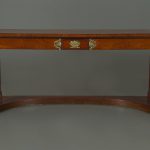
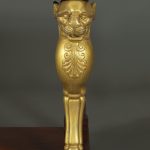

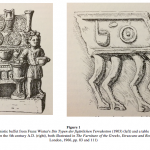
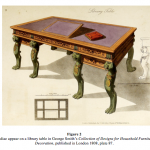
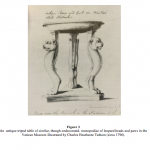
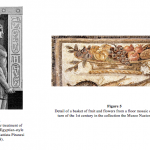
Comments are closed.